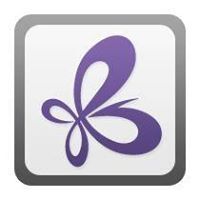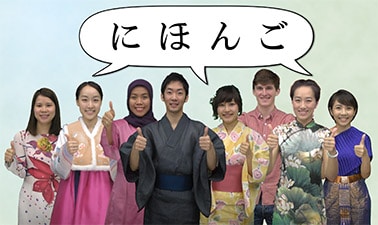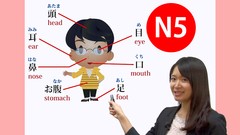
The Simple Guide to Learning Japanese with MOOCs
In the context of Japanese learning, MOOCs give you the best of both worlds: independent language learning, but with guided assignments and class-style support.
In this post, I’ll walk you through the basics of Japanese MOOCs, then we’ll show you several of my favorites, from beginner language courses to explorations of Japanese culture.
Contents
- What Are MOOCs?
- Language Foundation MOOCs
- MOOCs for Moving Beyond the Basics
- Bonus: Japanese Culture MOOCS
- Is a Japanese MOOC Right for You?
- And One More Thing...
Download: This blog post is available as a convenient and portable PDF that you can take anywhere. Click here to get a copy. (Download)
What Are MOOCs?
MOOC stands for Massive Open Online Course. In essence, they’re online courses that anyone can take, often at a low cost or free, on a wide range of topics.
They typically provide access to downloadable lesson materials, lectures and assignments, as well as a community of other learners. You’ll usually work with this community, giving feedback to others and collaborating to improve your skills. Some courses are taken in real-time, with a set schedule and at the guidance of an instructor, while others can be taken anytime and at any pace you like.
MOOCs are generally provided through a university, educational nonprofit or private educational company.
These platforms are typically free of charge, but many platforms have an added certificate or “nanodegree” option for a fee. These fees can range by a fair margin from $99 to $2,000, depending on the credential earned and who’s backing it up.
It’s important to note that some courses can eventually be traded in for college credit, but under very limited terms. You have to be careful if you choose to go this route, and talk to the school you want to accept the credits ahead of time.
These systems are still somewhat new and you wouldn’t want to go into it with the expectation of credits only to find out it wasn’t possible at the end. Better safe than sorry!
Language Foundation MOOCs
These classes will be useful to learners who are new to Japanese. They’ll get you familiar with basic greetings and other foundational concepts. Then they’ll move you forward to basic conversations. These courses are written for adults, but teens would also likely be able to use them easily.
MIT’s Japanese I Course
You can count on quality with this course from the prestigious Massachusetts Institute of Technology. This course is focused on foundational speaking, reading and writing, but it also assumes that you may be interested in dating or taking trips to Japan and even has a section on
Japanese calligraphy. The ultimate goal is to get you proficient in basic speaking and listening skills.
When you sign up, you’ll get access to six complete lessons and the associated course materials.
NIHONGO Starter
This course was jointly produced by the Japan Foundation and the Open University of Japan. It emphasizes both Japanese language and culture and uses realistic skits to demonstrate language use.
The course was specifically designed for beginner students who are thinking of studying in Japan. However, it would be useful to anyone seeking a strong foundation in the language or anyone interested in eventually living or working in Japan.
Learn Japanese for Beginners: The Ultimate 100-Lesson Course
This comprehensive beginner’s course aims to get you comfortable holding basic Japanese conversations across 100 video lessons.
To build good habits, the course teaches pronunciation from the start and offers plenty of precise listening drills so you can understand native speakers. The lessons are categorized into six sequential groups that work up from the basics to Japanese characters, pronunciation, speaking and listening.
This course is offered through Udemy, a big player in the MOOC field. Once you sign up, you’ll get lifetime access to the course materials as well as mobile compatibility. It does have a fee—but Udemy frequently offers significant discounts for its courses, so you may want to keep an eye out for one before you enroll.
MOOCs for Moving Beyond the Basics
These MOOCs will expand both your vocabulary and get you prepared for more detailed conversations. This level also allows for you to spend more time with your MOOC community and start having unscripted chats in Japanese.
Waseda University’s Japanese Pronunciation for Communication Course
Waseda University is a well-known institution in Tokyo. This speaking skills course, offered through edX, focuses on making sure that you understand the differences between the sometimes subtle sounds in the Japanese language.
The goal is to teach native-sounding pronunciation in order to minimize miscommunications and get you more confident as a Japanese speaker.
The free, five-week course is taught by a Professor at Waseda’s graduate school of Japanese applied linguistics. edX is another major MOOC provider that partners with some of the world’s most prestigious universities, such as Harvard and Berkeley—and offers their courses for free!
MIT’s Japanese II Course
Enjoy MIT’s beginner MOOC? Keep moving through their language series with this one, which will expand your communication skills and knowledge of kanji.
Along with the course materials available for download, you’ll get practice worksheets and solutions. As with the Japanese I MOOC, there are six lessons to complete, covering everything from adjectives to counting to comparisons in Japanese and more.
Japanese N5
As the title indicates, this course (another one offered through Udemy) corresponds to the N5 level (the easiest level) of the Japanese Language Proficiency Test. It includes 21 hours of video lessons covering daily life vocabulary, pronunciation, reading skills and more.
Of course it’s a great option if you’re preparing for the JLPT, but it’ll also be useful for anyone studying Japanese at school, planning to work in Japan or seeking some business communication skills in the language. It’s designed for upper-beginner learners who are comfortable with hiragana and katakana.
Bonus: Japanese Culture MOOCS
Of course, you can learn more than the Japanese language with a MOOC, and learning about the culture is essential to a full understanding of the language. The MOOCs below cover several topics in Japanese culture that’ll help give you a well-rounded education when paired with one or more of the language courses above. They’re offered in English so you can follow them at any stage of your Japanese learning.
If you’re just getting your feet wet in Japanese art and culture, try MIT’s courses on Japanese literature and cinema or gender and pop culture. These MOOCs should give you plenty to talk about with native speakers whether you’re traveling or having a language exchange.
Planning to study in Japan? The University of Tokyo has a MOOC to prepare you for student life and academic success.
And if you’re working in Japan or moving there for any other reason, you’ll appreciate MIT’s primer on Japanese history, economics and politics. FutureLearn’s MOOC on Japanese subcultures will also help you understand the local youth culture and its development from the 1970s to today.
Is a Japanese MOOC Right for You?
Like all things in life, MOOCs have good points and bad points depending on your personal goals. Making an informed decision is critical to your success in a Japanese MOOC.
First up, let’s talk about the feedback you’ll receive. The benefit is that MOOCs provide an opportunity for you to get your coursework crowdsourced, giving you a lot of feedback to work from. Note that most of this feedback will come from other students unless you take a course with an instructor, which typically means building your schedule around the course’s lecture dates and deadlines.
You should also be aware that lesser-known but more niche platforms may let people who are not verifiable experts develop the courses. So be careful before you put out your time and money—be sure to research your teacher.
Next up is scheduling. Most classes can be followed from anywhere on your own time. Do you want to watch a lecture video at 1 p.m.? That’s fine. Complete an assignment at 2 a.m.? That’s fine, too. This gives you a lot of flexibility and is especially great for anyone juggling work, family life and more alongside Japanese learning.
However, if you have a limited ability to self-manage, MOOCs may not be the best path for you. Be honest with yourself about your ability to meet and manage deadlines.
And remember that, as with any form of Japanese learning, MOOCs work best when you make a conscious effort to apply the lessons to real life. That means actively communicating with native speakers through meetups and language exchange apps. You can also immerse yourself in the language whenever you can.
With the variety of Japanese movies on Netflix and native media clips on the FluentU immersion program, authentic Japanese content is accessible to learners with an internet connection.
FluentU takes authentic videos—like music videos, movie trailers, news and inspiring talks—and turns them into personalized language learning lessons.
You can try FluentU for free for 2 weeks. Check out the website or download the iOS app or Android app.
P.S. Click here to take advantage of our current sale! (Expires at the end of this month.)

Alright, how about the big question: what do MOOCs cost? The good news is that MOOCs are generally quite affordable and often free. Depending on the MOOC platform, you can buy a course for a standalone fee, or sign up for a subscription on that platform. Either way, these classes are less expensive than a college course or traditional continuing education class would be.
MOOCS as Professional Credentials
The jury is still out about using MOOCS for your career. Some professionals are leaning towards them heavily, suggesting them as alternatives to even advanced college degrees, but others take a more conservative approach to listing them as credentials.
The truth is that the value on your resume will be largely unknowable until you’re actually in the interview. But it’s likely that as they become better understood, they’ll become more accepted.
It’s a bit of a wild west out there right now, so don’t be shy about explaining the coursework if you’ve been asked about it. And if you have any projects that you completed during your MOOC, then be ready to show those off.
In the end, maybe a MOOC is right for you or maybe it’s not. Only you can know that. Be honest with yourself about your ability to commit time and meet the needed deadlines. If now’s the right time and a MOOC works for you, there’s no time like the present to enroll!
Download: This blog post is available as a convenient and portable PDF that you can take anywhere. Click here to get a copy. (Download)
And One More Thing...
If you love learning Japanese with authentic materials, then I should also tell you more about FluentU.
FluentU naturally and gradually eases you into learning Japanese language and culture. You'll learn real Japanese as it's spoken in real life.
FluentU has a broad range of contemporary videos as you'll see below:

FluentU makes these native Japanese videos approachable through interactive transcripts. Tap on any word to look it up instantly.

All definitions have multiple examples, and they're written for Japanese learners like you. Tap to add words you'd like to review to a vocab list.

And FluentU has a learn mode which turns every video into a language learning lesson. You can always swipe left or right to see more examples.

The best part? FluentU keeps track of your vocabulary, and gives you extra practice with difficult words. It'll even remind you when it’s time to review what you’ve learned. You'll have a 100% personalized experience.
Start using the FluentU website on your computer or tablet or, better yet, download the FluentU app from the iTunes or Google Play store. Click here to take advantage of our current sale! (Expires at the end of this month.)







